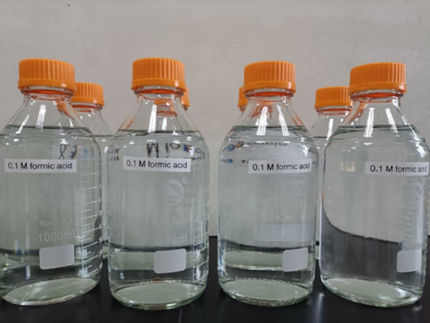Reacting under intensity – a light-responsive oscillating gel
An international team of chemists has developed a soft material that shows different behaviour depending on the intensity of the light shining on it. The gel could potentially be applied in robots and other devices to enable them to respond to different illumination patterns.
The unusual property is the result of a Belousov-Zhabotinsky reaction incorporated into the material. The reaction is known for its unusual oscillatory properties caused by the non-equilibrium thermodynamics, which can be used in soft materials to propel them through a tube by causing them to continually expand and contract.
When one end of a Belousov-Zhabotinsky gel is made to oscillate faster than the other, the frequency difference causes the gel to move in the direction of the faster oscillations. The scientists used a photosensitive catalyst for their Belousov-Zhabotinsky reactions to make the reactions light sensitive and unexpectedly found that by changing the intensity of the light the gel showed both photophobic and phototropic responses. They propose that this is due to an unexpected frequency maximum, which the oscillation reaches at a particular intensity. When illuminated so that both ends of the gel are at that point, the darker region has a higher frequency and the gel becomes photophobic, moving away from the light. When both ends are illuminated to the point where they are oscillating below the maximum frequency, the brighter region has the higher frequency and the gel becomes phototropic, moving towards the light.
Most read news
Original publication
Organizations
Other news from the department science

Get the chemical industry in your inbox
From now on, don't miss a thing: Our newsletter for the chemical industry, analytics, lab technology and process engineering brings you up to date every Tuesday and Thursday. The latest industry news, product highlights and innovations - compact and easy to understand in your inbox. Researched by us so you don't have to.


























































